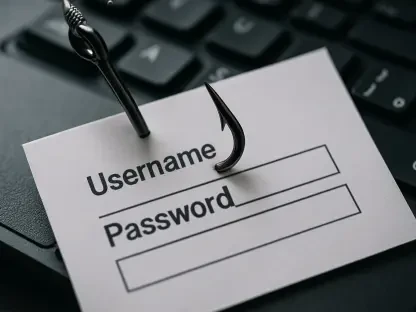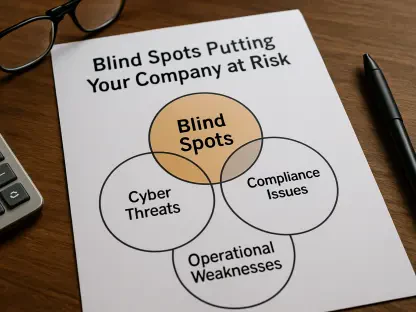In the ever-evolving landscape of software development, security remains a critical concern. Despite numerous initiatives aimed at enhancing security, applications continue to exhibit vulnerabilities that can be exploited by malicious actors. This article explores the most common security mistakes made by developers and provides actionable advice to mitigate these risks.
The Persistent Issue of Insecure Applications
Despite decades of security initiatives such as secure by design, defense in depth, shifting left, and DevSecOps, insecure applications remain a significant problem. The complexity of modern app development, which includes cloud computing, containers, and API connections, exacerbates this issue. The exponential growth in demand for applications and APIs has made these components attractive targets for threat actors. This increasing demand has seen a startling 49% increase in web attacks against applications and APIs from Q1 2023 to Q1 2024. This surge indicates a troubling trend that developers and IT professionals must urgently address.
The integration of new technologies into app development frameworks has created a myriad of potential vulnerabilities. Cloud computing and containerization introduce layers of abstraction and numerous attack vectors that were previously non-existent. Each added layer brings its own set of security challenges, often leading to points of failure that can be exploited. Moreover, the interconnected nature of APIs means that a single weak point can compromise an entire system. DevSecOps, despite its promise of integrating security into every phase of development, still grapples with implementation issues that can leave gaps in protection. This ongoing struggle suggests that more effective strategies are critically needed to adapt to the evolving threat landscape.
Bad Input Controls: A Gateway for Attacks
One of the most common and pernicious security mistakes in software development is the neglect of proper input validation. The complexity of ensuring accurate input validation often leads developers to overlook its importance, a mistake that opens the door to various types of attacks such as cross-site scripting (XSS) and SQL injection. These vulnerabilities are devastating because they enable attackers to manipulate input data in ways that can compromise entire applications. By not enforcing rigorous input validation, developers unknowingly allow malicious data to be processed by their applications, resulting in potentially catastrophic outcomes.
Experts like Tanya Janca have pointed out that this negligence often arises from a misguided prioritization of testing simplicity over robust security measures. Developers, in their haste to meet deadlines and deliver functional products, sometimes adopt shortcut strategies that fail to comprehensively vet inputs. This practice significantly elevates the risk of security breaches. The solution lies in adopting best practices such as parameterized queries and ensuring that inputs are both syntactically and semantically validated. By enforcing these measures, developers can greatly reduce the attack surfaces of their applications, making it far more difficult for malicious actors to exploit input vulnerabilities.
Weak Authentication and Lax Permissions
Another critical area where security often falls short is in the implementation of authentication mechanisms and the enforcement of role-based permissions. In the rush to bring products to market, developers frequently resort to weak authentication processes. This includes the perilous use of hard-coded credentials and insufficient permissions, which can lead to disastrous breaches. The stakes are high, as an analysis by Git Guardian highlighted that breaches involving exposed secrets often remained unaddressed for days at a time. This delay in resolving exposed secrets compounds the damage by giving attackers more time to exploit these weaknesses.
To mitigate these risks, several best practices must be adopted. Enforcement of multifactor authentication (MFA) is a critical first step. By requiring multiple forms of verification, MFA adds an extra layer of security that makes unauthorized access significantly more difficult. Regular auditing of credentials and permissions is also essential. These audits should be rigorous and frequent to ensure that no outdated credentials remain in use and that permissions align with current security requirements. Removing unused credentials promptly can eliminate unnecessary risk. These measures collectively help to secure the authentication framework, thereby safeguarding sensitive data and functionalities from unauthorized access.
Inadequate API Protection and Enumeration
As APIs become increasingly integral to the functionality of modern applications, securing them has never been more important. However, many developers have experienced significant security issues with their production APIs. The number of API-related breaches continues to rise, pointing to a systemic problem that requires immediate attention. Poorly protected API keys, exemplified by recent breaches at the Internet Archive, underscore the necessity of establishing robust API gateways and implementing consistent security policies. These breaches illustrate how easily an improperly secured API can be exploited, leading to potentially severe consequences.
Continuous monitoring and real-time threat identification tools are among the most effective measures to address these challenges. These tools can provide ongoing visibility into the security posture of APIs, enabling developers to quickly detect and respond to any anomalies or threats. Additionally, the implementation of API gateways can offer a centralized point of control for managing authentication, rate limiting, and access control policies. These strategies help safeguard the integrity of API communications and ensure that sensitive data remains protected. By adopting a holistic approach to API security, developers can significantly reduce the risk of breaches and better protect their applications.
Tooling Challenges in Application Security
Maintaining robust application security is fraught with challenges, particularly due to the sheer variety and specialization of security tools required. Achieving comprehensive coverage is a daunting task, and the selection of the right tools is crucial to providing effective protection. Gartner suggests starting with an API gateway to manage and monitor APIs, code scanning tools for proactive vulnerability identification, and web application firewalls (WAFs) to protect against diverse attacks. These tools offer a foundational layer of security, but their effectiveness ultimately depends on how well they are integrated into daily development processes.
Beyond merely selecting the right tools, understanding and fostering a security culture within the development team is essential. Tools need to be operationalized effectively, which means they must be seamlessly woven into the workflow without overwhelming developers. Generating lengthy lists of vulnerabilities can be counterproductive if developers are unable to prioritize and address these issues effectively. The focus should instead be on integrating tools in such a way that they provide actionable insights and foster a proactive security stance. By creating an environment where security tools are seen as integral components rather than burdens, organizations can achieve better security outcomes and more resilient applications.
The Pitfalls of Poor Automation
In the world of software development, automation is often hailed as a key to efficiency and consistency, yet poor implementation can lead to significant security pitfalls. Automated processes that are not properly refined or checked may overlook critical vulnerabilities. An over-reliance on automation without thorough manual review and periodic audits can result in a false sense of security. Developers need to balance automation with vigilance and ensure that automated systems are tailored to respond to the nuanced demands of robust security protocols. Effective automation should complement, not replace, vigilant security practices.









